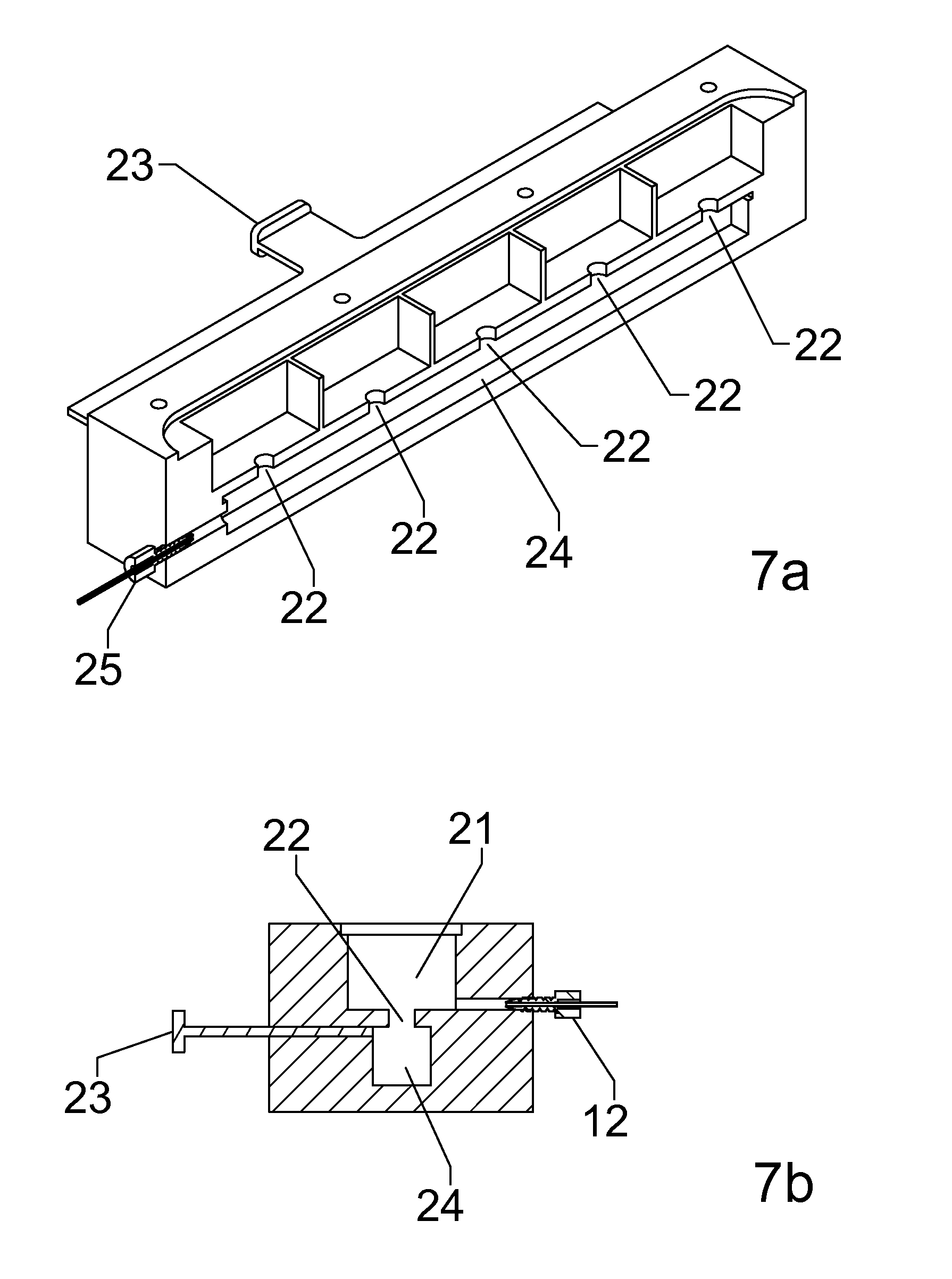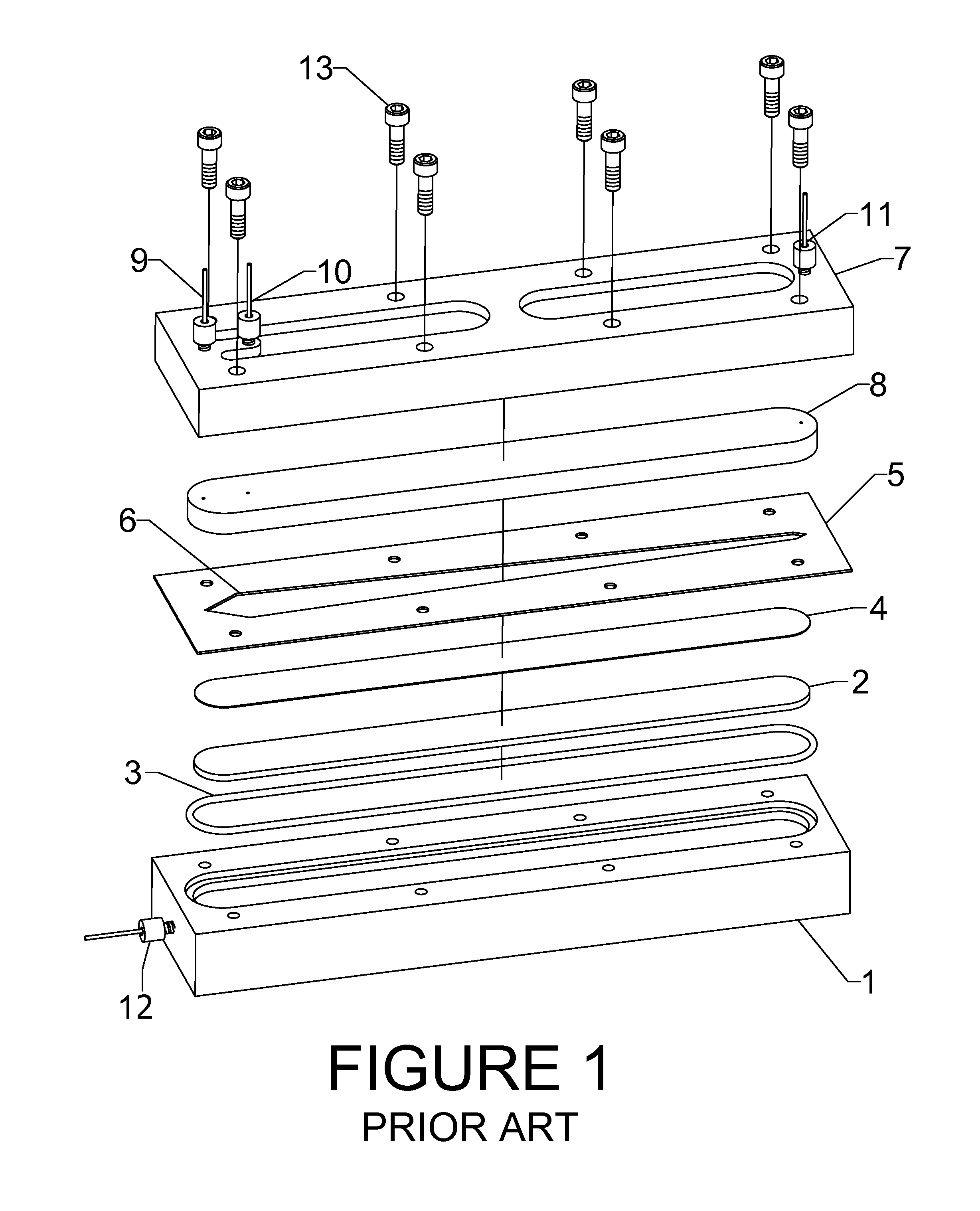Compartmentalized field flow fractionation
a fractionation field and fractionation technology, applied in the direction of filtration separation, separation process, instruments, etc., can solve the problems of inability to detect fractions such as correspondingly very low concentrations, associative limitations, and no longer be subject to the cross force needed to continue separation
- Summary
- Abstract
- Description
- Claims
- Application Information
AI Technical Summary
Benefits of technology
Problems solved by technology
Method used
Image
Examples
Embodiment Construction
[0031]We begin with a review of the elements of an asymmetric flow FFF channel. The A4F channel, illustrated in FIG. 1, is comprised of the following elements together with means to hold them together:[0032]1) a bottom assembly structure 1 holding a liquid-permeable frit 2 surrounded by a sealing O-ring 3,[0033]2) a permeable membrane 4 that lies on the frit 2,[0034]3) a spacer 5 of thickness from about 75 μm to 800 μm into which has been cut a cavity 6, and[0035]4) a top assembly structure 7 generally holding a transparent plate 8 of material such as Lexan® or glass. The plate need not be transparent for some implementations.
[0036]The resulting sandwich is held together with bolts 13 or other means. The generally coffin-shaped or tapered cavity 6 in the spacer 5 will serve as the channel in which separation will occur. The top assembly structure 7 usually contains three holes, called ports, that pass through the top plate 8 and are centered above the channel permitting the attachme...
PUM
| Property | Measurement | Unit |
|---|---|---|
| size | aaaaa | aaaaa |
| size | aaaaa | aaaaa |
| permeable | aaaaa | aaaaa |
Abstract
Description
Claims
Application Information
 Login to View More
Login to View More - R&D
- Intellectual Property
- Life Sciences
- Materials
- Tech Scout
- Unparalleled Data Quality
- Higher Quality Content
- 60% Fewer Hallucinations
Browse by: Latest US Patents, China's latest patents, Technical Efficacy Thesaurus, Application Domain, Technology Topic, Popular Technical Reports.
© 2025 PatSnap. All rights reserved.Legal|Privacy policy|Modern Slavery Act Transparency Statement|Sitemap|About US| Contact US: help@patsnap.com



